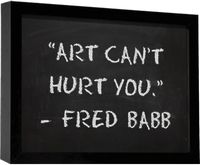Trauma
Art as a Path of Peace in a Violent World
The ever-present possibility for hope to emerge from despair.
Posted December 21, 2012

In past posts over the last four and a half years, I have talked about how the arts therapies, particularly art therapy, mediate and ameliorate the impact of trauma and exposure to violence. Just this past summer I found myself writing a brief guide to how to apply the healing arts to mass violence in response to the Aurora Colorado shooting on July 20, 2012. It now seems strangely surreal to see that particular post being re-circulated via social media and the news and throughout the websites of my colleagues who provide trauma intervention. It is humbling to have so many revisit or read this piece for the first time in response to the most recent incident of mass violence in the US. But it also brings me back to the question that millions of people are struggling with this week—just what can each of us do to help change what feels like a runaway train of gun violence, unfathomable grief, and uncertainties about just which interventions and procedures will make our world a safer place for our children and ourselves.
In terms of trauma and loss, the work of reparation in the Newtown Sandy Hook Elementary school shooting is barely just beginning. Having participated in multiple school shooting debriefings in the late 1990s, I know that emotional recovery comes in stages and often over the course of years and sometimes decades; for some it will be a recurrent experience triggered by anniversaries and subsequent life events. In working with those who are survivors or witnesses to homicide, each time I learn more about how individuals can benefit from art expression and how it complements trauma-informed practice with people of all ages. I have also been fortunate to witness how the arts impact not only psychological trauma, but also the experience of violence including interpersonal, community, and societal violence.
I continue to believe that arts therapies and similar approaches play an important supporting role in addressing both the aftermath of violence and are a form of prevention of violent behavior in children, adolescents and adults. When I speak of arts therapy in this sense I am not talking about a workbook of instant interventions, a few drawings or expressive activities. I am talking about how a deeper and meaningful engagement in art expression can profoundly make a difference. We now have evidence of this from many sources including white papers by the National Endowment for the Arts, data from prevention programs and conflict resolution within juvenile justice systems and emerging research on military veterans who report that art expression reduces feelings of anger, hopelessness and depression. We also learned a great deal from other incidents of mass violence including children’s responses to arts-based interventions post-September 11, 2001 and how art therapy in particular informed understanding of posttraumatic stress responses in young clients.
In the aftermath of Newtown, the recurring question of violence-themed video games has once again emerged as one of many possible explanations for mass homicide. Correlation studies examining the relationship between video games’ content and real-life violence have produced mixed results although most researchers believe that there is an identifiable connection. In contrast to the experience of violent visual scenarios that possibly reinforce subsequent negative behaviors and aggression, the experience of creative self-expression through the arts is generally polar-opposite. Immersion in art expression is an experience of slowing down the body’s sympathetic nervous system and one that engages the individual in what creativity expert Csikszentmihalyi calls the flow state. Art making also capitalizes on the senses in ways far different from a joystick and a digital screen. It provides a brain-wise, hands-on experience that helps us to feel better through experiences of rhythm, pattern, color, play and movement that mediates depression and anxiety. In brief, art expression is not just an effective prescription for stress reduction; it creates a pathway to personal inner peace.
Granted, no amount of arts-based intervention will change a mind that has criminal intent or is flooded by impulses to irrationally hurt others. We still have a lot to learn about how the arts help and what combinations of arts therapies and other interventions reduce the incidence of violence in schools and communities. The arts are not a miracle cure for a nation that must find answers to questions about gun control and fears of future random acts of violence. But one thing I wake up believing each day is this—the arts, whether as formal therapy, community outreach or enrichment, do impact lives in positive, far-reaching ways. They change the way we experience the world and when provided with intention and understanding, they can reduce stress, increase positivity, and reinforce self-efficacy. Most of all, the very existence of creative expression as a human behavior embodies the ever-present transformative possibility for hope to emerge from despair, aggression and violence.
Cathy Malchiodi, PhD, LPCC, LPAT, ATR-BC
Follow Art Therapy News on Twitter
Resources: For those who continue to contact me about resources, here is a list of previous posts related to arts therapies, trauma and violence:
The Healing Arts After a Crisis: 7 Essential Practices
Trauma-Informed Expressive Arts Therapy
What Art Therapy Learned from September 11th
Helping Children Cope with Hurricane Irene: Start with Family Rituals
When Trauma Happens, Children Draw: Part I [and see Part II and III]
Trauma-Informed Practices and Expressive Arts Therapy Institute [website with links to additional resources on expressive arts therapy, trauma-informed practice and integrative medicine]


